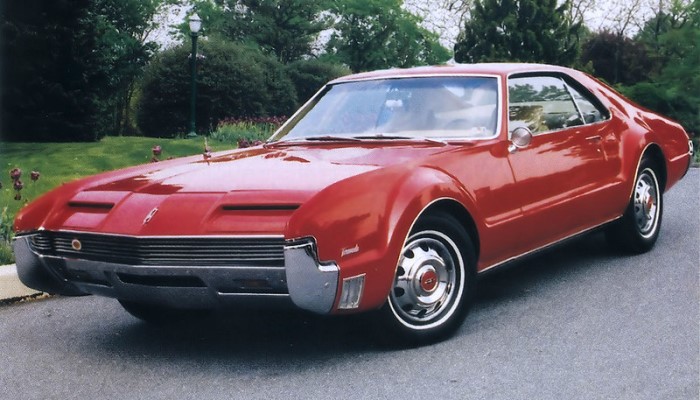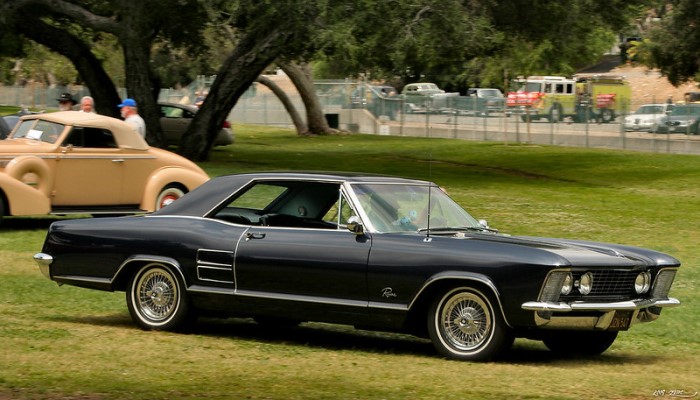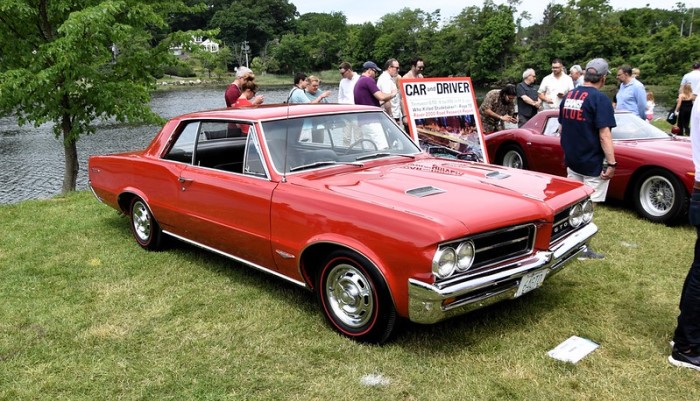1966 Dodge Charger
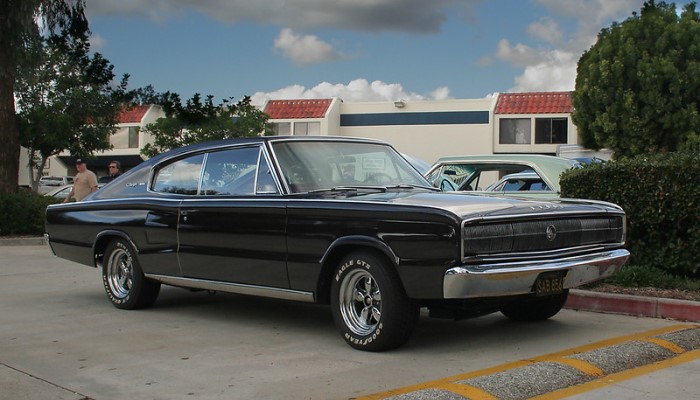
Photo: "1966 Dodge Charger - black - fvr2" by Rex Gray
A Classic American Fastback
In 1964, the most powerful 335-horsepower Pontiac GTO went on sale, which looked like an ordinary Pontiac Tempest coupe but was loaded with a huge engine (V8 - 389 cu in / 6.4 liters). At the same time, the buyer received a real sports car at a very reasonable price.
The release of this model marked the beginning of the era of "muscle cars"—the emergence of a new class of American cars equipped with multi-liter power units.
The GTO model became so popular that other American automakers followed this path, launching the production of similar models. Naturally, the Chrysler Corporation could not stand aside; it also wanted to "snatch" its "tasty piece of the pie" in this "freshly baked" sector of the car market.
In 1965, the first prototype of the future supercar from Chrysler, the Dodge Charger, was built. The promising car was based on the 5th generation Dodge Coronet sedan, from which the vast majority of parts were borrowed, including 8-cylinder V-engines.
In fact, the Charger was a modification of the Coronet, differing mainly in body type and new stylistic solutions (the new car was designed as a fastback coupe). The design of the new supercar was developed under the leadership of Carl "Cam" Cameron.
Presentation and Appearance
The Dodge Charger was first introduced to the public on January 1, 1966, at the annual Rose Bowl Game. Sales of Chargers began in mid-1966.
A characteristic original feature of the Charger is the radiator grille, called the "electric shaver." The grille covers the nose so that the headlights are hidden behind it, a design feature used by Chrysler stylists in the 1930s and 1940s on some models from the DeSoto division. It should be noted that the grille fragments covering the headlights can be removed if necessary.
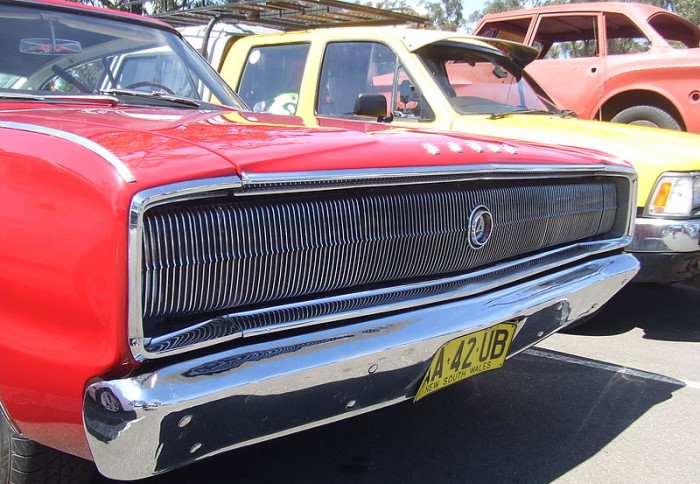
Photo: "1966 Dodge Charger (15201275836)" by Jeremy from Sydney, Australia
The spacious interior of the Dodge Charger is equipped with four individual anatomical seats. The interior is divided in the middle by a long console that extends from front to back (full console). The rear seats and part of the console can be folded forward, and the luggage compartment partition can be lowered backwards; this allows luggage to be placed in the cabin.
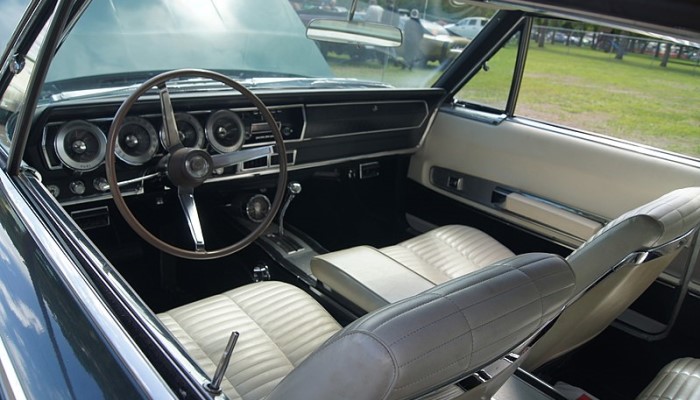
Photo: "1966 Dodge Charger (18162488940)" by Greg Gjerdingen from Willmar, USA
At the end of 1966, it was possible to order the car with a spoiler, which was located on the trunk lid. The Dodge Charger became the first production car in the United States to be equipped with a spoiler.
Range of Engines
All the engines that were equipped with the Charger were exclusively V8 6-cylinder engines until 1968 (then the second generation came to replace them) and were not offered. In 1966, buyers could choose any of four engines based on their needs and "wallet size." Transmissions were also offered to choose from: manual, 3- and 4-speed, as well as automatic.
The base engine was a 318 cu in (5.2-liter) V8 engine, which developed a maximum power of 230 hp, which made it possible to accelerate a 1,600-kilogram car to 118 mph (190 kph) and reach 100 kph (62 mph) in 9 seconds.
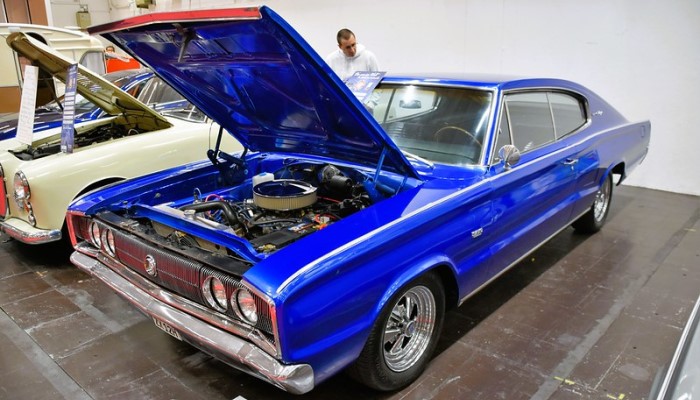
Photo: "Dodge Charger (1966)" by usf1fan2
The next oldest was the 361 cu in (5.9 liter), which produced 265 hp, followed by the 383 cu in (6.3 liter) which developed 325 hp. The "monster" HEMI 426 with a working volume of as much as 426 cu in (7.0 liters) closed the line. He extracted 425 "horses" from it. The Charger HEMI could accelerate to 130 mph (210 kph) and reach 100 kph (62 mph) in 6 seconds.
Production Numbers and Changes in 1967
In general, the debut of the Charger was quite successful; in 1966, 37,344 vehicles were manufactured.
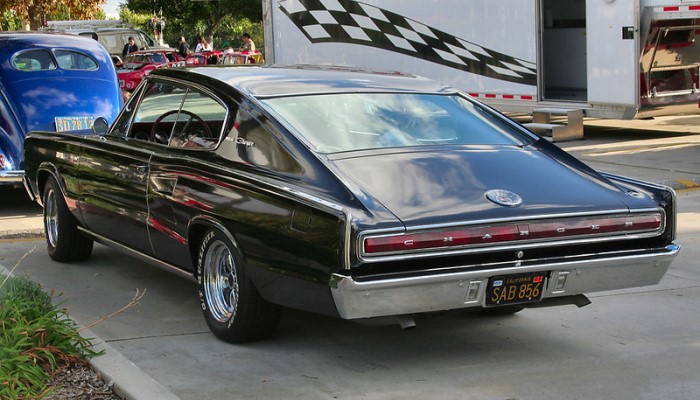
Photo: "1966 Dodge Charger - black - rvl" by Rex Gray
1967 brought some changes; first of all, this affected the interior, which was noticeably modernized. The full-length console disappeared, due to complaints about the inconvenience of getting in and out of the rear seats.
The body in 1967 underwent virtually no noticeable changes. Upon request, it became possible to install vinyl roofs, which gave the car design additional aggressiveness and swiftness.
In 1967, the "361" engine (5.9 liters) disappeared, but the line of power units was replenished with two engines: the derated "383" (6.3 liters) with power reduced to 270 hp, then the "Street HEMI" of 426 cu in (7.0 liters) which produced 425 hp, and the "Magnum 440" with an impressive displacement of 440 cu in (7.2 liters) which produced 375 hp.
In total, there was a choice of five engines with power ranging from 230 to 425 hp.
Despite successful performances in NASCAR competition in 1966, which logically should have served as good advertising, sales in 1967 were halved. In 1967, only 15,788 Dodge Chargers were sold due to fierce competition in this sector of the car market. The main competitors were the Ford Mustang and Chevrolet Camaro.
In 1968, sales of the second-generation Charger began, which was built on the same base but had a new body.
1966 Charger in Today's Market
As of today, the value of a 1966 Dodge Charger can vary significantly. This iconic American muscle car has gained quite a following among car enthusiasts and collectors alike, which has driven up its demand and value. If you're lucky enough to find a well-maintained and restored 1966 Dodge Charger, it could easily fetch a high price.
The condition and originality of the car are important factors that contribute to its value. A fully restored, numbers-matching Charger in excellent condition can command a price tag in the range of $20,000 to $100,000 or even more. These pristine examples often feature impeccable paintwork, flawless interiors, and meticulously rebuilt engines.
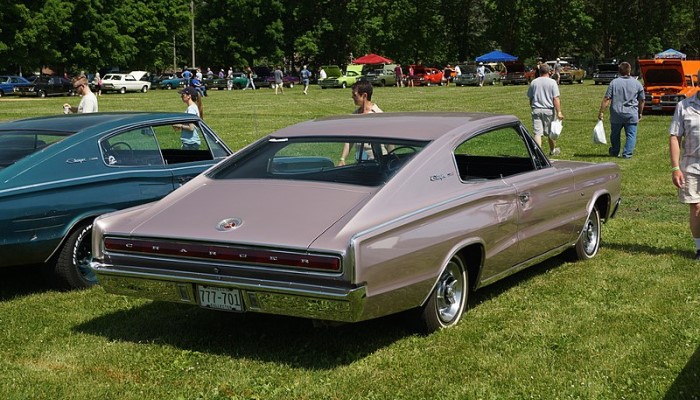
Photo: "File:1966 Dodge Charger (34281521454).jpg" by Greg Gjerdingen from Willmar, USA
On the other hand, if you come across a project car or a Charger in need of significant restoration, the price will be considerably lower. You could potentially find an unrestored 1966 Dodge Charger for around $5,000 to $15,000. However, keep in mind that restoring such a vehicle would require a significant investment in terms of time, money, and effort.
Furthermore, additional features and options can also affect the value of a 1966 Dodge Charger. For instance, the presence of highly desirable factory-installed features like air conditioning, power windows, or a rare engine configuration can increase its worth.
Originality is highly prized in the collector car market, so any modifications or alterations made to the car may negatively impact its value.
It's also worth noting that the geographic location and current market trends can influence the value of the 1966 Dodge Charger. Prices can vary between different regions and fluctuate over time due to supply and demand dynamics. Therefore, it's advisable to consult with experts or do thorough research before making any purchasing decisions.
Overall, the 1966 Dodge Charger remains a highly sought-after classic car that retains its appeal even after several decades. Its timeless design, powerful performance, and cultural significance continue to captivate automotive enthusiasts, making it a valuable and intriguing vehicle in today's market.

Unique Car Zone Team
A group of several fans of everything that moves on four wheels, a few article creators, a couple of marketing strategists, designers, web developers, and lots of coffee.




